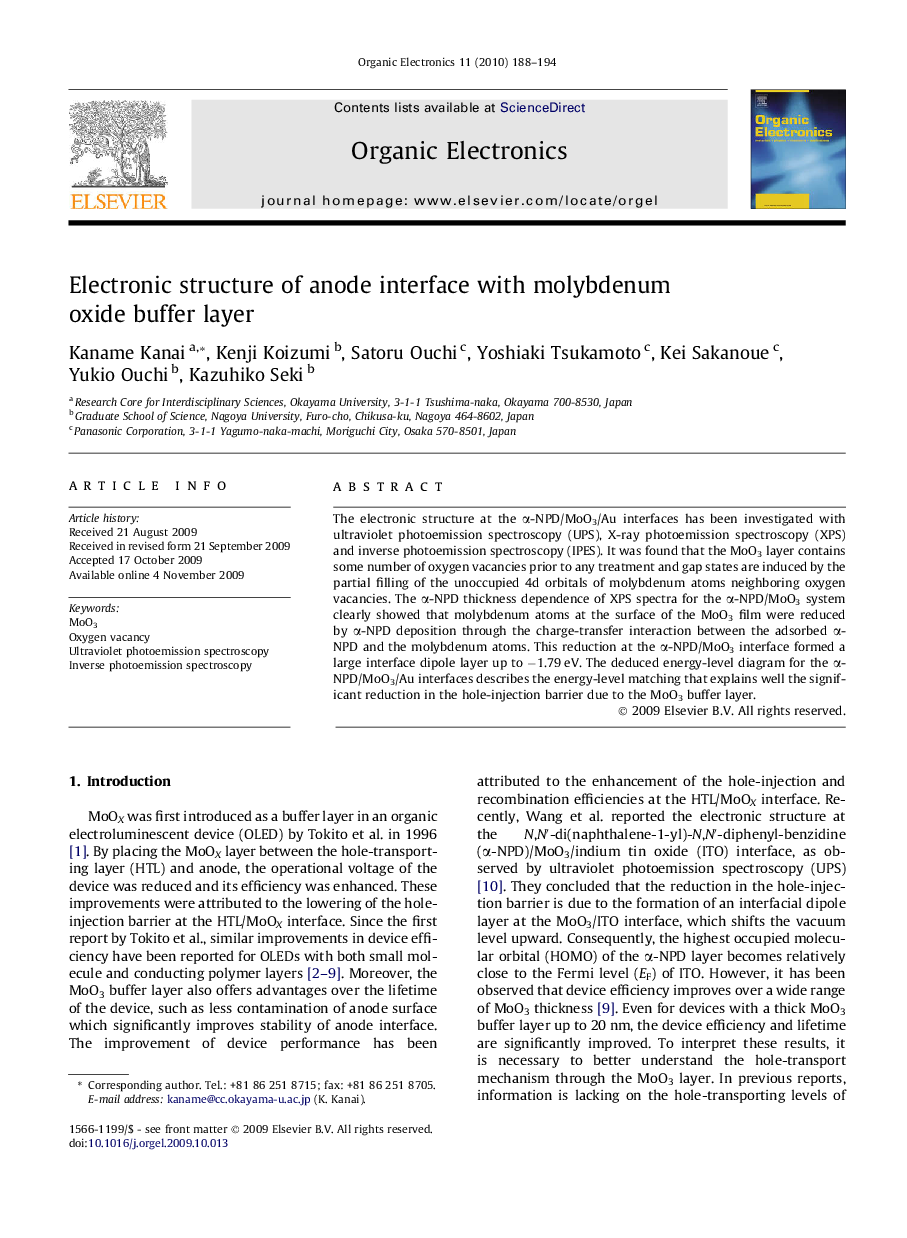| کد مقاله | کد نشریه | سال انتشار | مقاله انگلیسی | نسخه تمام متن |
|---|---|---|---|---|
| 1267954 | 972386 | 2010 | 7 صفحه PDF | دانلود رایگان |

The electronic structure at the α-NPD/MoO3/Au interfaces has been investigated with ultraviolet photoemission spectroscopy (UPS), X-ray photoemission spectroscopy (XPS) and inverse photoemission spectroscopy (IPES). It was found that the MoO3 layer contains some number of oxygen vacancies prior to any treatment and gap states are induced by the partial filling of the unoccupied 4d orbitals of molybdenum atoms neighboring oxygen vacancies. The α-NPD thickness dependence of XPS spectra for the α-NPD/MoO3 system clearly showed that molybdenum atoms at the surface of the MoO3 film were reduced by α-NPD deposition through the charge-transfer interaction between the adsorbed α-NPD and the molybdenum atoms. This reduction at the α-NPD/MoO3 interface formed a large interface dipole layer up to −1.79 eV. The deduced energy-level diagram for the α-NPD/MoO3/Au interfaces describes the energy-level matching that explains well the significant reduction in the hole-injection barrier due to the MoO3 buffer layer.
Journal: Organic Electronics - Volume 11, Issue 2, February 2010, Pages 188–194